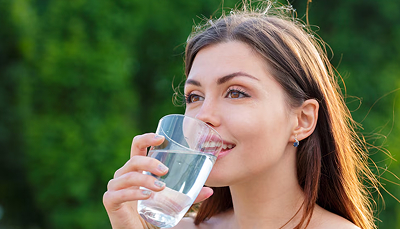1. Maintains Tear Production
Your tears are mostly water — produced by the lacrimal glands.
Dehydration reduces the body’s ability to produce sufficient, high-quality tears, leading to dryness, grittiness, and irritation.
2. Supports Tear Film Balance
The tear film has three layers: oily, watery (aqueous), and mucous.
Without proper hydration, the aqueous layer becomes thin, disrupting tear stability and increasing evaporation.
3. Prevents Ocular Surface Damage
Dry, under-hydrated eyes are more prone to inflammation, abrasions, and infection.
Staying hydrated helps keep the eye surface smooth and nourished, reducing the risk of damage.
4. Counteracts Environmental Dryness
Exposure to dry environments (air-conditioning, screen time, travel) increases fluid loss.
Drinking enough water helps the body replenish lost moisture and maintain tear volume.
5. Simple Rule: 8–10 Glasses a Day
Aim for at least 2–2.5 liters/day, or more if:
You’re active
You consume caffeine or alcohol
You live in a hot or dry climate
Summary:
Adequate hydration helps manage dry eye by:
Supporting tear production
Enhancing tear film quality
Reducing inflammation
Keeping the eye surface moist and comfortable
Pro Tip:
Pair hydration with:
Regular blinking
Omega-3 rich foods
Humidified environments
Proper screen habits
